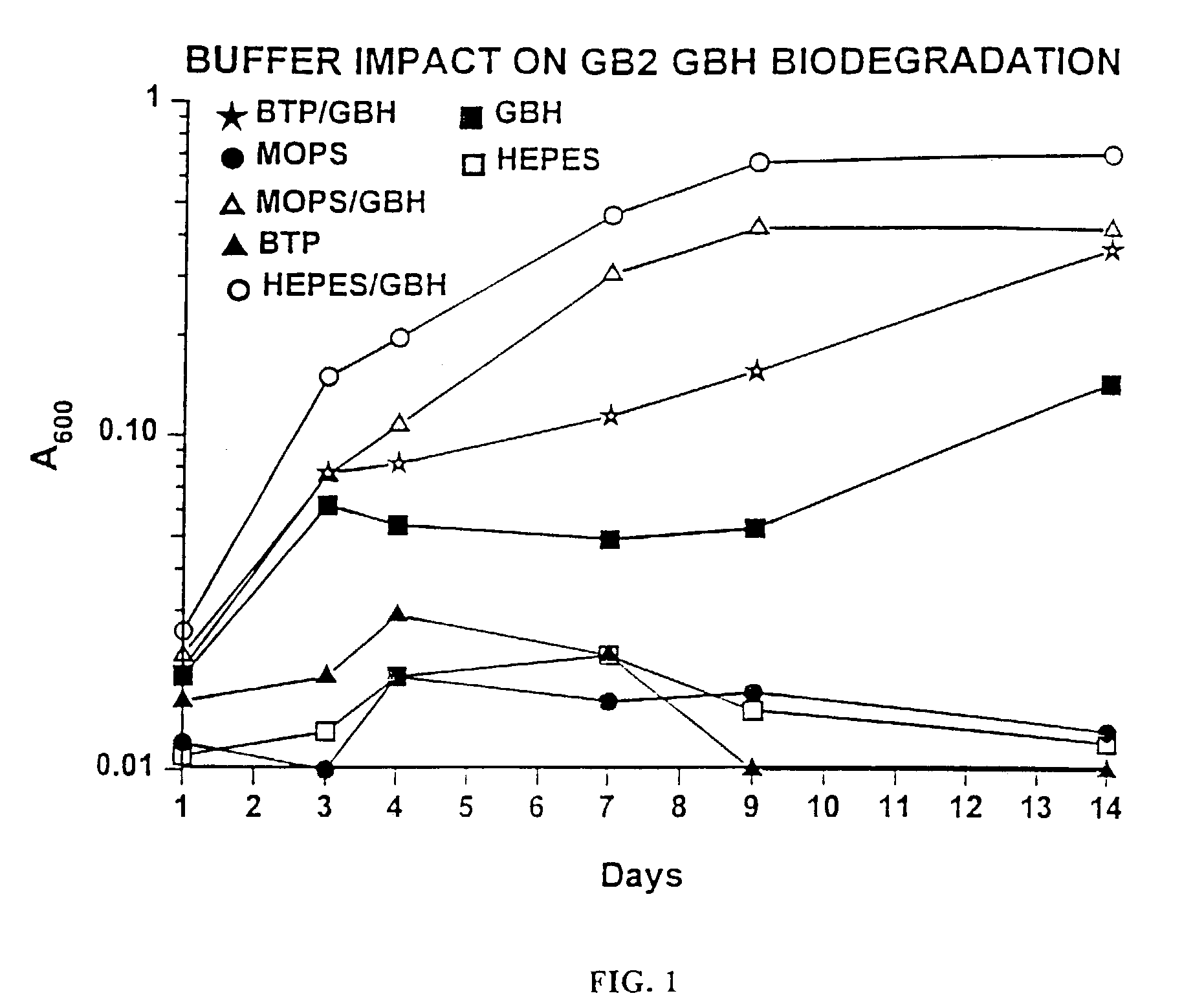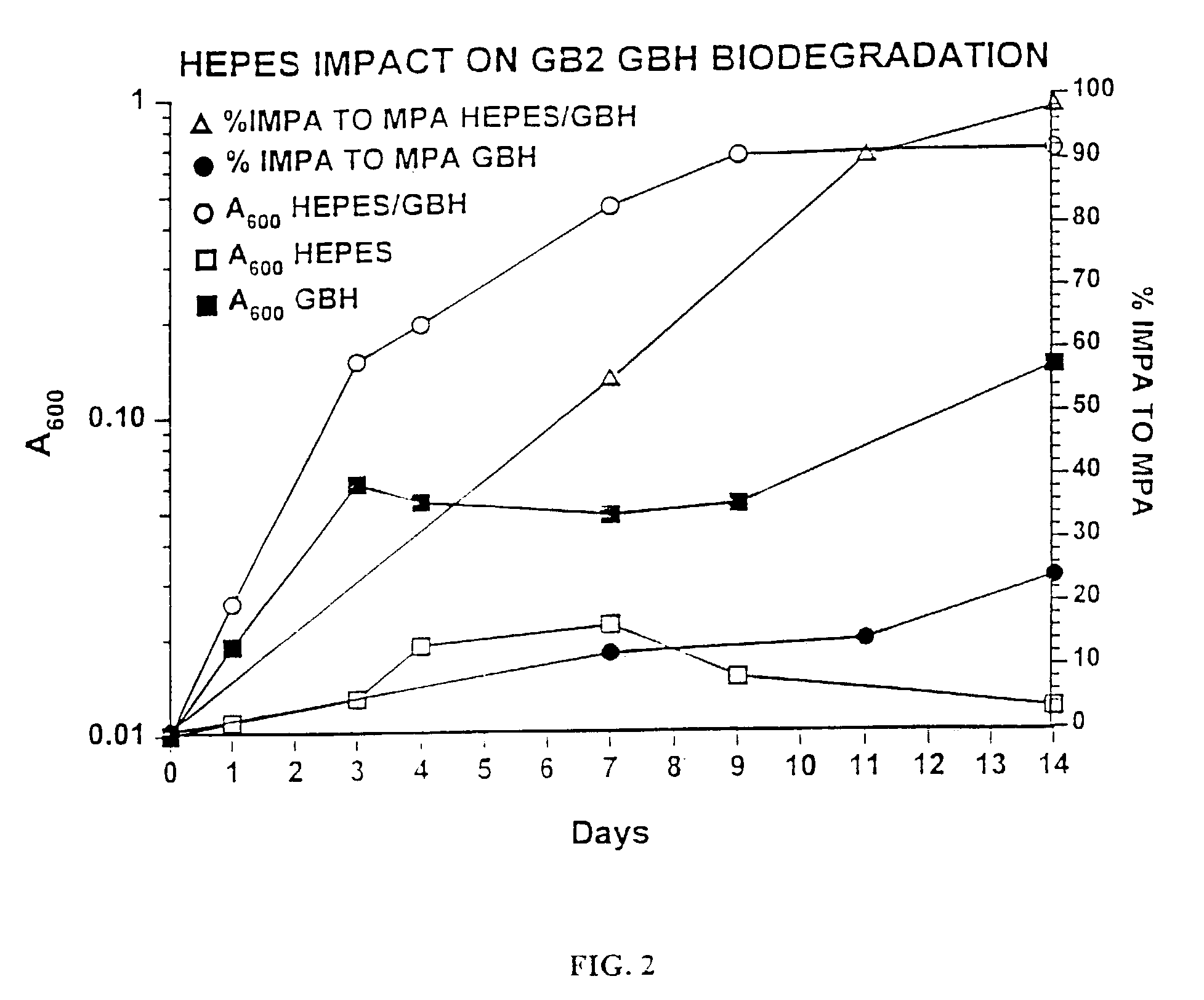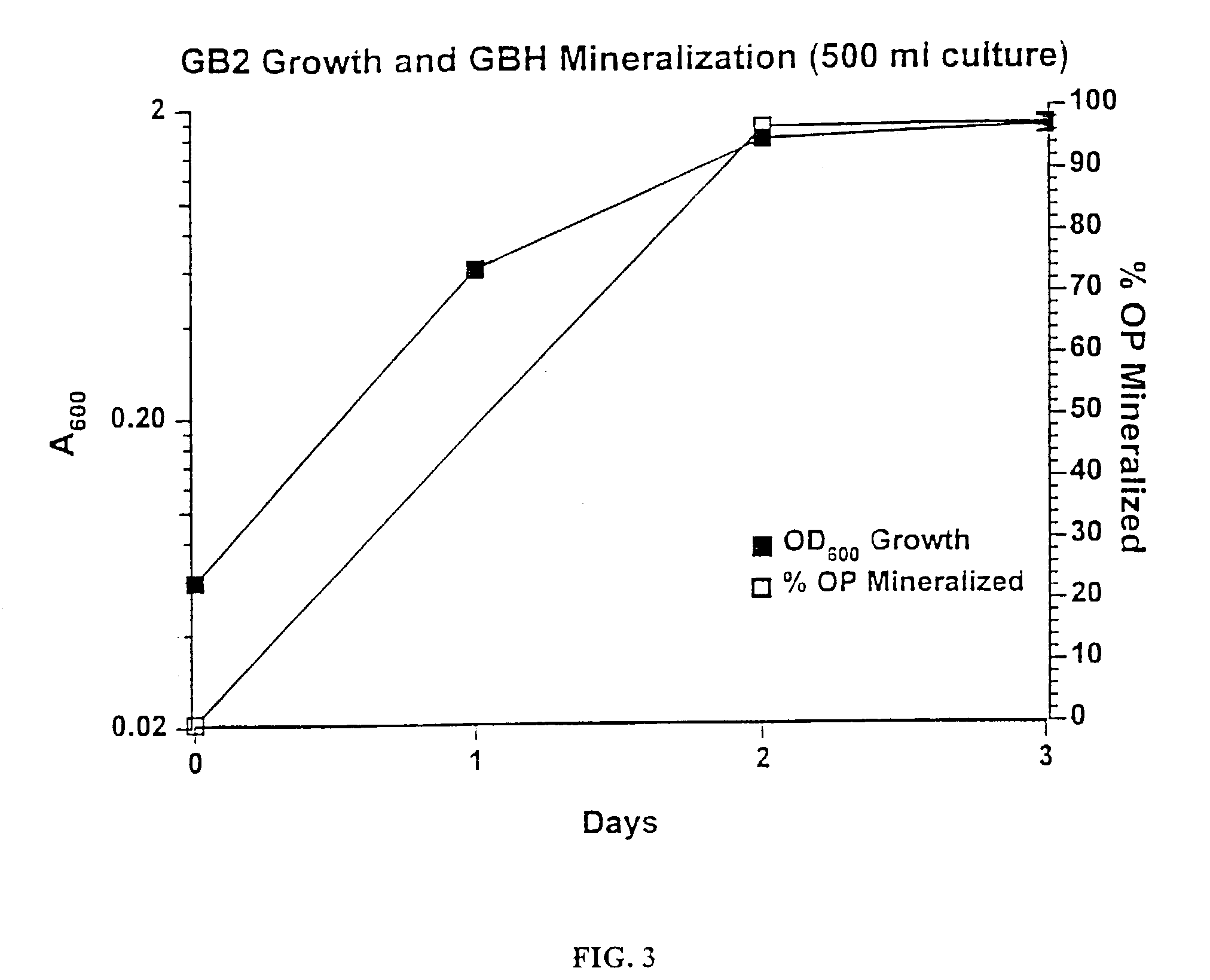Microbial biodegradation of phosphonates
a technology of phosphonates and biodegradation, applied in the field of biodegradation of phosphonates, can solve the problems of consortium degrading mpa to liberate methane and inorganic phosphate, and achieve the effect of degrading said phosphonates
- Summary
- Abstract
- Description
- Claims
- Application Information
AI Technical Summary
Benefits of technology
Problems solved by technology
Method used
Image
Examples
example 1
Preparation of the GB2 Consortium
[0035]The GB2 consortium is composed of the following bacteria:[0036]Methylobacterium radiotolerans GB21[0037]Agrobacterium tumefaciens GB2GA[0038]Klebsiella oxytoca GB2CS[0039]GB272[0040]Aureobacterium GB2[0041]GB23[0042]GB 292
[0043]GB23, GB292, and GB272 are unidentified organisms, but their physiological descriptions are reported in TABLE 1.
[0044]
TABLE 1Characteristics of the Unidentified Bacteria of the GB2 ConsortiumCellularColonyIsolateGramMorph.Morph.OxidaseCatalaseMedia GrowthGB272−Cocco-0.5 mm+−TSA, MPAG,bacilluswhiteGBMH GBHGB23−Cocco-0.5 mm+−TSA, MPAG,bacilluswhiteGBMH GBHTSA = Trypticase Soy AgarGBMH = GBM buffered with 50 mM HEPESMPAG = GBMH + 2.30 mM MPA + 20 g / l glucoseGBMH GBH = GBMH + 80 ml / L GBHGB2CS4 belongs to the Aureobacterium genus and has been identified as Aurobacterium sp. GB2
[0045]All of these organisms were derived from cultures selected for their ability to use IMPA as a sole carbon / phosphorus source. Sequencing batch rea...
example 2
[0048]IMPA mineralization is also possible with GB2, if an additional carbon source is supplied after IMPA conversion to MPA is complete. This was demonstrated in lab-scale cultures (500 ml) using an inexpensive carbon source, corn syrup (FIG. 3). A 50 ml, 12 day GB2 culture that was grown on GBM 50 mM HEPES and 80 ml / l GBH was transferred to a 2 liter flask, diluted 1:10 with GBM-50 mM HEPES, and supplemented with corn syrup to a final concentration of 20 mL / L. The GB2 culture was introduced and was incubated at 29° C. under constant stirring at 150 rpm for three days. Growth was monitored turbidometrically at 600 nm and optical parameters were quantitated by CGC-FPD. Results of this example are shown in FIG. 3. During this process, the MPA produced from IMPA is degraded by the invention for the inorganic phosphate it yields to meet the phosphorus demands of the culture. This property is an inherent characteristic of the consortium; no additional inoculum is needed for MPA minerali...
PUM
 Login to View More
Login to View More Abstract
Description
Claims
Application Information
 Login to View More
Login to View More - R&D
- Intellectual Property
- Life Sciences
- Materials
- Tech Scout
- Unparalleled Data Quality
- Higher Quality Content
- 60% Fewer Hallucinations
Browse by: Latest US Patents, China's latest patents, Technical Efficacy Thesaurus, Application Domain, Technology Topic, Popular Technical Reports.
© 2025 PatSnap. All rights reserved.Legal|Privacy policy|Modern Slavery Act Transparency Statement|Sitemap|About US| Contact US: help@patsnap.com



